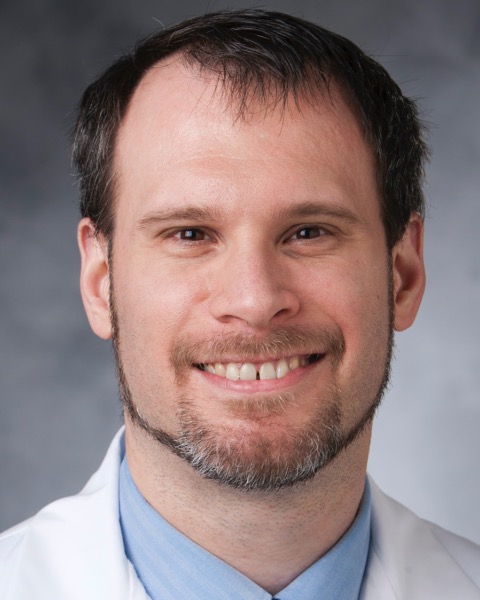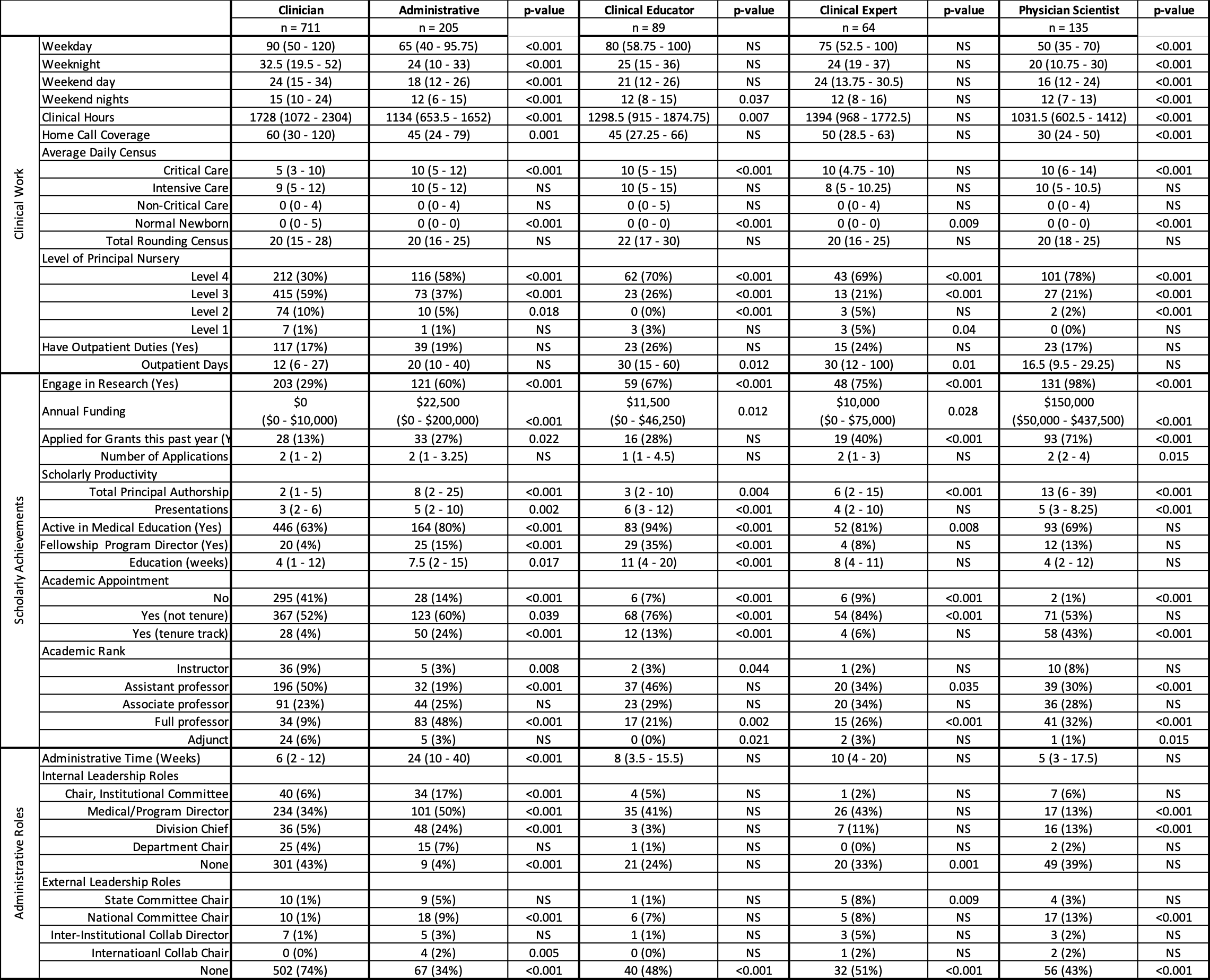Neonatal General
Category: Abstract Submission
Neonatology General 8: Health Disparities - Health Services Research
212 - A Look at Five Self-Identified Career Paths of a Neonatologist
Sunday, April 24, 2022
3:30 PM - 6:00 PM US MT
Poster Number: 212
Publication Number: 212.339
Publication Number: 212.339
Eric Horowitz, Boston Children's Hospital, Marblehead, MA, United States; Anisha Bhatia, Northeast Ohio Medical University, Canton, OH, United States; Holly S. Ruch-Ross, American Academy of Pediatrics, Evanston, IL, United States; Lauren Barone, American Academy of Pediatrics, Itasca, IL, United States; Mark L. Hudak, University of Florida College of Medicine - Jacksonville, Jacksonville, FL, United States

Eric Horowitz, MD (he/him/his)
Senior Staff Scientist
Boston Children's Hospital
Marblehead, Massachusetts, United States
Presenting Author(s)
Background: Careers in medicine have traditionally been dichotomized as academic or private practice. Over time, career identities have become more fluid. As the healthcare delivery system has evolved to allow individuals to pursue interests that defy binary categorization, the definition of a full time equivalent (FTE) has become more complex. and accommodates a colorful tapestry of possibilities.
Objective: This study examined characteristics of 5 career paths by exploring the professional duties of those who identified with them. We hypothesized that these career types have distinct profiles of relative effort in the domains of clinical work, scholarly achievement, administrative responsibilities, total time effort, and compensation.
Design/Methods: The AAP conducted a voluntary anonymous survey of all board-certified and eligible United States neonatologists from July to November 2021. 2113, or 39%, of surveyed individuals responded. The survey included questions about professional duties, social factors, and compensation. We offered respondents the opportunity to identify with 1 of 5 career paths (Table 1): Clinician; Administrative/Leadership; Clinician-Educator; Clinical Expert; and Physician-Scientist. We used the subset of respondents who identified a primary career path for this comparative analysis. Statistical analyses, including t-test of means and Wilcoxon test of medians, were performed using JMP 16.1.0 by SAS (Cary, NC).
Results: Of the 1737 active physician respondents, 1204 (Table 1) self-identified with one of these 5 career paths. There were significant differences between the Clinician career path and each of the 4 others (Tables 2 and 3). Administrators had fewer clinical obligations, engaged in more research, held higher academic rank, had more administrative time, and received the highest compensation. Clinical Educators and Clinical Experts differed in clinical expectations, participated in more research and medical education, held higher academic rank, and received lower compensation. Physician-scientists had the lowest clinical time commitment, had the greatest effort in research, held higher academic rank, and received lower compensation.Conclusion(s): Careers among neonatologists are diverse, span a range of opportunities, and defy traditional binary categorization. The AAP survey provides robust validation of 5 distinct career paths that blend different elements of academic and private practice activities in variable proportions.
Table 1: Respondent Characteristics
Table 2: Professional Activity across Career Types* * All p-values reflect statistical significance of comparison to Clinician
* All p-values reflect statistical significance of comparison to Clinician
Objective: This study examined characteristics of 5 career paths by exploring the professional duties of those who identified with them. We hypothesized that these career types have distinct profiles of relative effort in the domains of clinical work, scholarly achievement, administrative responsibilities, total time effort, and compensation.
Design/Methods: The AAP conducted a voluntary anonymous survey of all board-certified and eligible United States neonatologists from July to November 2021. 2113, or 39%, of surveyed individuals responded. The survey included questions about professional duties, social factors, and compensation. We offered respondents the opportunity to identify with 1 of 5 career paths (Table 1): Clinician; Administrative/Leadership; Clinician-Educator; Clinical Expert; and Physician-Scientist. We used the subset of respondents who identified a primary career path for this comparative analysis. Statistical analyses, including t-test of means and Wilcoxon test of medians, were performed using JMP 16.1.0 by SAS (Cary, NC).
Results: Of the 1737 active physician respondents, 1204 (Table 1) self-identified with one of these 5 career paths. There were significant differences between the Clinician career path and each of the 4 others (Tables 2 and 3). Administrators had fewer clinical obligations, engaged in more research, held higher academic rank, had more administrative time, and received the highest compensation. Clinical Educators and Clinical Experts differed in clinical expectations, participated in more research and medical education, held higher academic rank, and received lower compensation. Physician-scientists had the lowest clinical time commitment, had the greatest effort in research, held higher academic rank, and received lower compensation.Conclusion(s): Careers among neonatologists are diverse, span a range of opportunities, and defy traditional binary categorization. The AAP survey provides robust validation of 5 distinct career paths that blend different elements of academic and private practice activities in variable proportions.
Table 1: Respondent Characteristics

Table 2: Professional Activity across Career Types*
 * All p-values reflect statistical significance of comparison to Clinician
* All p-values reflect statistical significance of comparison to Clinician